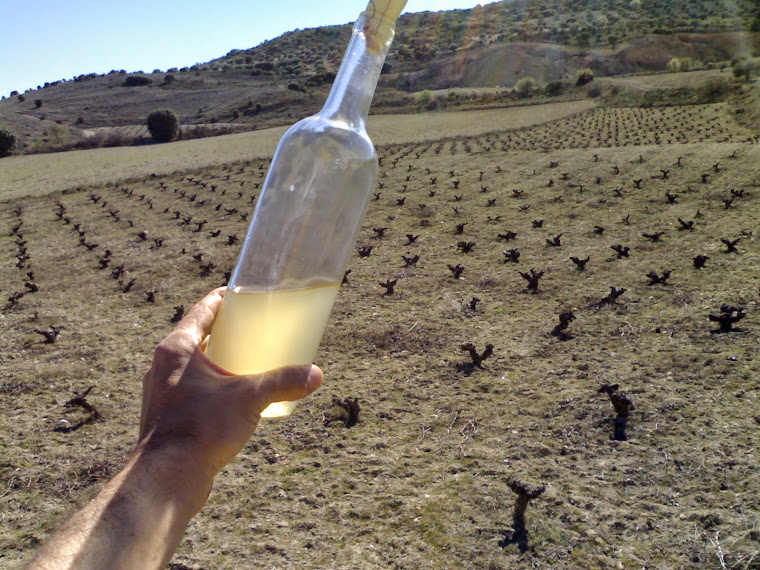Even though it's very early on (harvest is still about 2 or 3 weeks away) we thought we'd start sampling the grapes now, so we can plot a nice graph and see how the sugar level goes up over time!
Link to YouTube:
http://bit.ly/ahlmM3 (short video from vineyard)
You need about half a kilo of berries, which you then crush and strain. I thought that you could just wander about the vineyard and pick a few berries at random, but it's more complicated than that - according to my partner Juan - if you want a proper representative sample!!! Here are some of the criteria: berries should be picked from all over the vineyard - if not from every vine, then from every "x" number of vines; from the outside of the vine and from the inside; from the N, S E and W of the vine; from the bottom, middle and top of the cluster; big, medium and little berries.
Well, I made an effort to be methodical and I complied with the criteria, more or less, even though it took me more than 2 hours to collect the berries!
Tempranillo clusters (1) (22 August 2010)
Tempranillo clusters (2) (22 August 2010)
Pretty strange! Some clusters haven't changes colour at all! Any thoughts?
Tempranillo clusters (3) (22 August 2010)
Tempranillo clusters (4) (22 August 2010)
Then at the bodega I crushed the grapes, strained the must and poured it into a test-tube type container: 10.4 on the Beaumé scale, which looked up on a conversion table gives 10.5% probable alcohol content if harvested now. I also put a drop of juice on the end of the spectrometer, held it up to the sun and looked through the other end; you get a view similar to what a U-boat commander sees when looking through his periscope before launching a torpedo at the convoy! The three readings in the periscope were: 19% mas sacch.; 79 º0e; and 16.1 ºKMW Babo; I'll let Juan figure those ones out :)
(Next time (in a few days) I'll take photos of the process. I forgot to take any in the winery)
Ideally we should also test the acidity too. Over time the sugar content goes up and the acidity goes down, and the trick is to harvest at the optimum moment. Too much sugar and the wine will be too alcoholic, flat and heavy. Not enough sugar, and the wine will be thin and acidic.
Does anyone know a way to measure the acidity? (that we can do ourselves, that is, without having to send off samples to a lab)
The above reading were for Tempranillo: I also did the Airén, which had a Beaumé level of 7, which converts to a probable alcohol content of 6.5%.
A lastly, some wild vines (ie, where the grafted varietal didn't take and the rootstock itself is sprouting):
Wild vine (1)
Wild vine (2)
As I say every year at this time, 'next year we're going to graft a varietal onto the rootstocks'!! We never seem to find the time - but this time we really must do it :)












